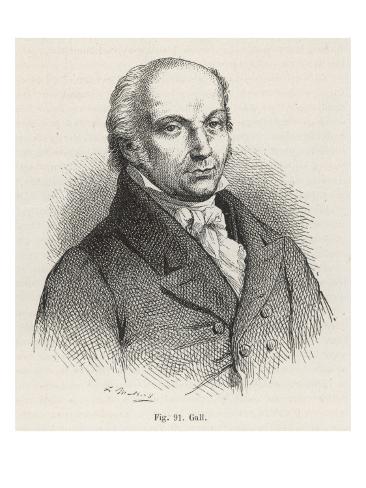

As for why he focused on skulls rather than the brain itself, this was in part because it was difficult to obtain the brains of great people, not to mention preserving these prize specimens for future study (Finger & Eling, 2019, pp. He referred to his “secondary” methods only when they were in accord with what he believed cranioscopy was revealing about the mental faculties and the organization of the brain. Skilled as an anatomist, he also drew from research on human and comparative nervous system anatomy-importantly, numerous studies that he conducted with his assistant (from 1805 to about 1813), Johann Gaspar Spurzheim (1776–1832).ĭespite his various methods, Gall always viewed human cranioscopy as his primary method. As he would reveal in great detail in his two sets of books, his Anatomie et Physiologie du Système Nerveux en Général, et du Cerveau en Particulier (Gall & Spurzheim, 1810–1819) and his less expensive Sur les Fonctions du Cerveau et sur Celles de Chacune de ses Parties (Gall, 1825 English edition, Gall, 1835), he also studied animals, correlated cognitive changes with age, examined people born with disabilities, conducted autopsies on individuals injured or affected by diseases, and more. Studying the skulls of three extremes of society, namely criminals, the insane, and great people, was not Gall's only method. He maintained that the sites for the organs of their stand-out traits would be revealed in tell-tale cranial bumps caused by the growth of specific, underlying brain areas. The faculties of mind and the sizes and locations of their respective organs, he argued, could be discerned by studying the skulls of people unusually strong in a single trait or propensity. His basic thesis was that there are many independent faculties of mind (e.g., for music, mathematics, color perception), and that each has a separate cortical organ.

He started in about 1796 by lecturing at his home in Vienna and provided an overview of his emerging doctrine in the liberal German periodical, Neue Teutsche Merkur, in 1798. Late in the 18th century, Franz Joseph Gall (1758–1828) began to present his nascent doctrine about human and animal cognitive traits and how they relate to the organization of the brain (for a detailed biography, see Finger & Eling, 2019).


 0 kommentar(er)
0 kommentar(er)
